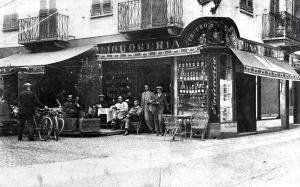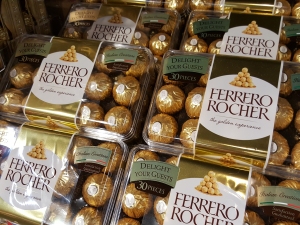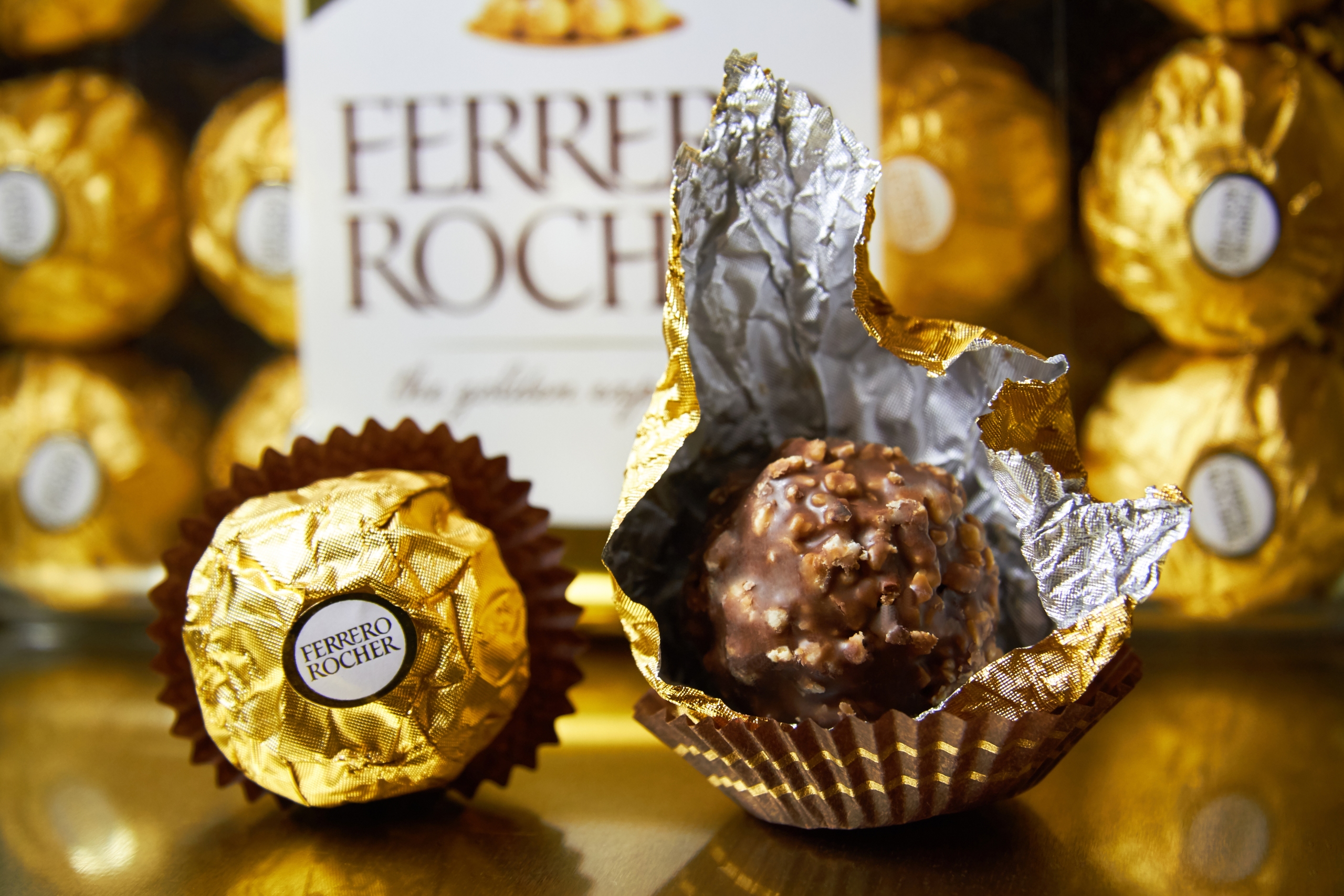It began in Alba, a small town in Piedmont, northern Italy, known for its white truffles and postcard landscapes. In the 1950s, amidst the fog and chill of this region, a young pastry chef named Pietro Ferrero was working tirelessly in his modest workshop. In the years following World War II, when cocoa was scarce, Pietro invented a hazelnut-based spread to address this shortage. That spread, which would become Nutella, would forever change European breakfast habits and turn the Ferrero family into billionaires.
But this isn’t the story of Nutella. It’s the story of another Ferrero creation – a smaller, more fragrant confection. Unlike Nutella, it isn’t spread but carefully unwrapped, like a tiny jewel. It’s a spherical chocolate, wrapped in golden foil, set in a brown paper cup, and presented with the elegance of a guest at a gala.
Ferrero Rocher. The iconic symbol of “affordable luxury” in the 1980s and 1990s – a staple at holiday gatherings, diplomatic receptions, and last-minute gifts.
But behind that golden wrapper is more than just a clever marketing strategy. There is a vow, a personal devotion, and a precise location: Lourdes.
A Man, a Factory, and His Faith

Michele Ferrero, Pietro’s son, inherited the family’s chocolate empire and transformed it into a global powerhouse. Unlike many other industry magnates, Michele was intensely private, rarely speaking to the press and avoiding interviews. But one thing was known to everyone around him – his deep Catholic faith, particularly his devotion to the Madonna of Lourdes.
Each year, Ferrero organized pilgrimages to Lourdes for his employees and their families, personally covering all costs – travel, lodging, everything. The Ferrero Group has continued this tradition even after Michele’s death in 2015.
In a 2011 interview, one of his longtime collaborators revealed that every Ferrero factory worldwide has a statue of the Madonna of Lourdes at its entrance. In a letter to his employees, Michele wrote:
“Everything we have achieved, we owe to the Madonna.”
The Secret Name Behind the Golden Foil
In French, the word rocher means “rock.” Anyone familiar with the Lourdes shrine knows that at the heart of this pilgrimage site is a rocky grotto, the Grotte de Massabielle, where in 1858 a 14-year-old girl named Bernadette Soubirous reported a series of visions of the Virgin Mary.
Naming a chocolate “Ferrero Rocher” might seem like a simple stylistic choice, a way to evoke French sophistication. But for Michele Ferrero, it was a personal homage – a small act of gratitude, a way to spiritually consecrate even a mass-market product.

The Elegance of Devotion
The design of the Ferrero Rocher itself reflects this reverence. Its golden foil, reminiscent of a precious relic, and its dark paper cup evoke a sense of ritual. The spherical, irregular shape – chopped hazelnuts encasing a wafer shell and creamy center – subtly echoes the natural, unpolished form of a sacred rock.
Even the arrangement of the chocolates in their transparent boxes, neatly aligned, suggests a sense of order and contemplation, like objects meant for quiet admiration.
Lourdes – Not Just Miracles
For those unfamiliar, Lourdes is a small town at the foot of the Pyrenees in southern France. It is one of the world’s most visited Catholic pilgrimage sites, attracting around 3 million visitors each year, drawn by the promise of spiritual and physical healing. The spring water from the grotto is bottled and sent around the world.
Yet Lourdes is also a bustling town, filled with shops, hotels, candles, and multilingual prayers – a place where spirituality and commerce often meet. For Michele Ferrero, however, Lourdes was never a commodity. It was a place of deep personal meaning, a refuge for prayer, far from the cameras and crowds.
Sweet Secrets
Ferrero is known for its obsessive secrecy. Its recipes are guarded as closely as military codes, and the production process behind the Rocher – a delicate balance of textures and flavors – remained unmatched for years, despite numerous attempts by competitors to replicate it.
Some say this meticulous attention to detail extends beyond the technical. Like a small, ritual act, each Rocher is a carefully crafted object, reflecting the quiet devotion of its creator.
An Accessible Little Luxury
First introduced in 1982, Ferrero Rocher quickly carved out a unique niche. It wasn’t a high-end, artisanal chocolate, but it wasn’t a bargain sweet either. It was refined yet accessible, a little luxury for the everyday.
In a way, it was a secular miracle – transforming a personal act of faith into a global product, without ever explicitly using that faith as a marketing tool. A silent, consistent gesture, perfectly aligned with Michele Ferrero’s private, reflective nature.
Is a Chocolate Ever Just a Chocolate?
The next time you open a box of Ferrero Rocher, consider the layers of meaning it contains. The true mystery isn’t just the taste or the recipe. It’s how a simple act of devotion became a global symbol, without ever losing its soul.
Michele Ferrero died in 2015 at the age of 89. His funeral was attended by much of the town of Alba, the air filled with Marian hymns.
Today, the Ferrero Group remains one of the largest confectionery companies in the world, with brands like Kinder, Tic Tac, and Nutella. Each year, thousands of Ferrero employees continue to make the pilgrimage to Lourdes – quietly, without fanfare – in a tradition as layered and carefully constructed as the Rocher itself.





